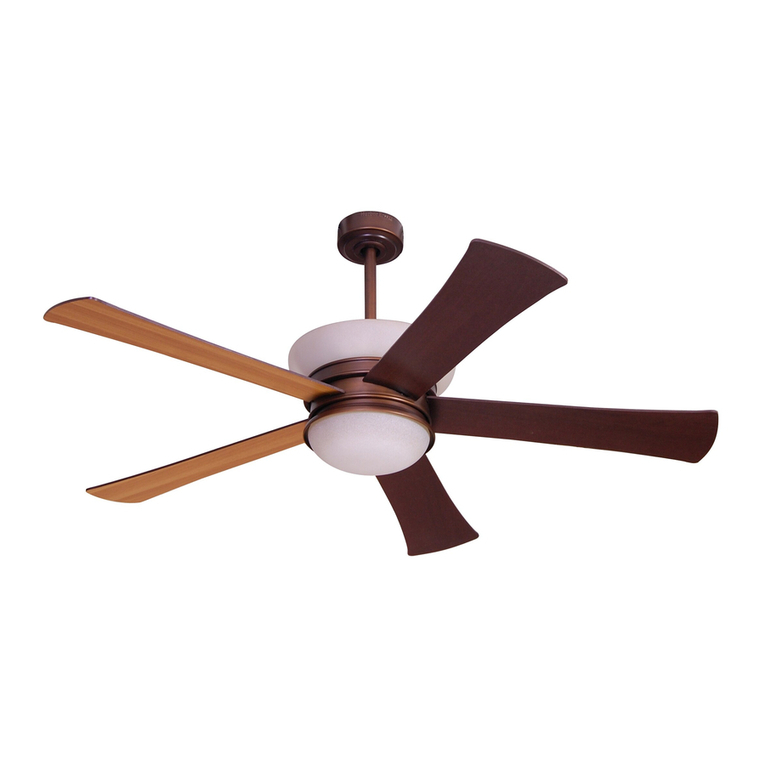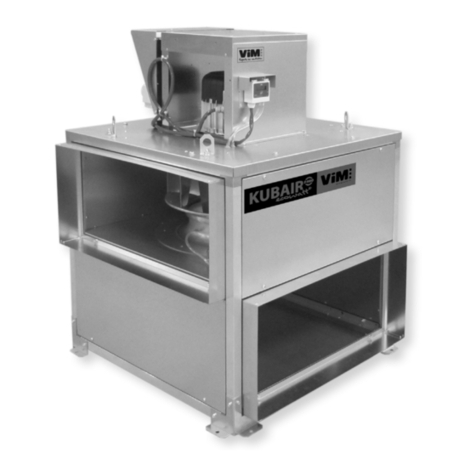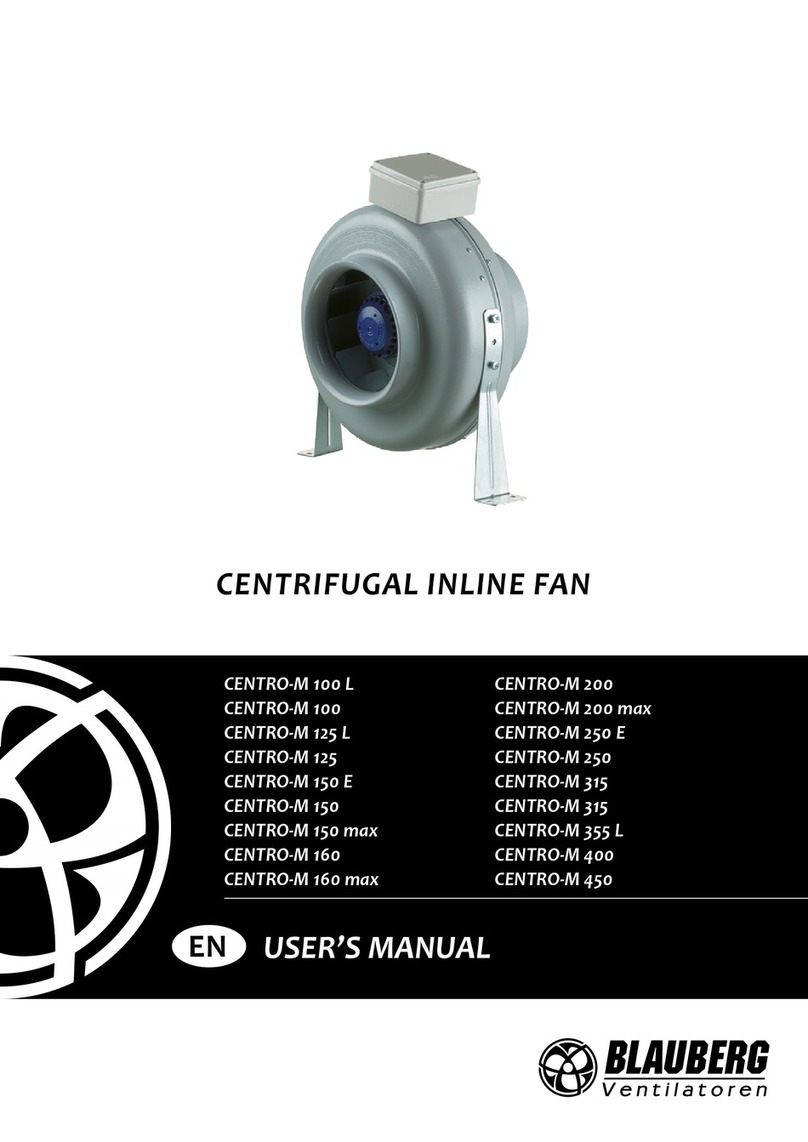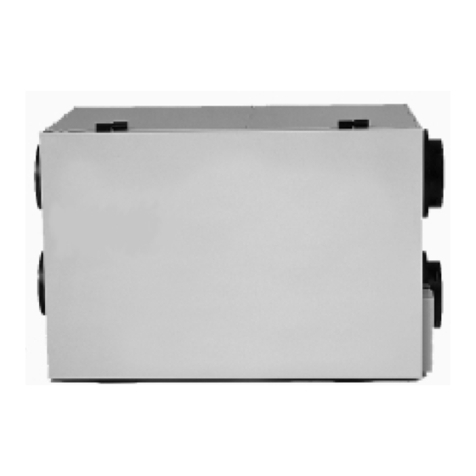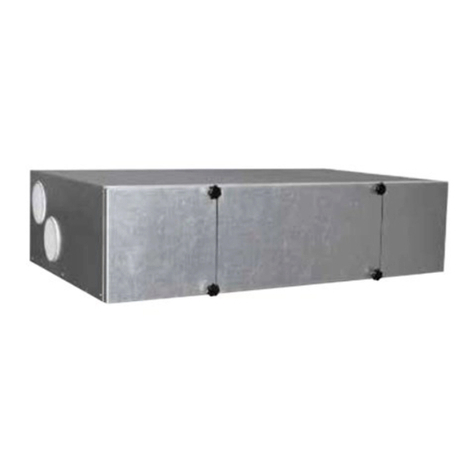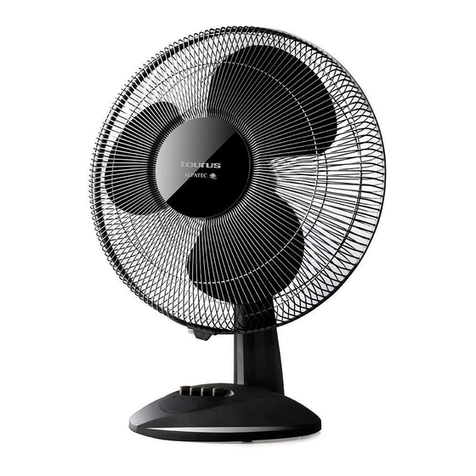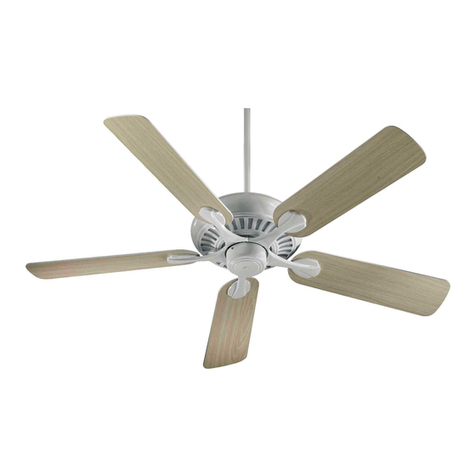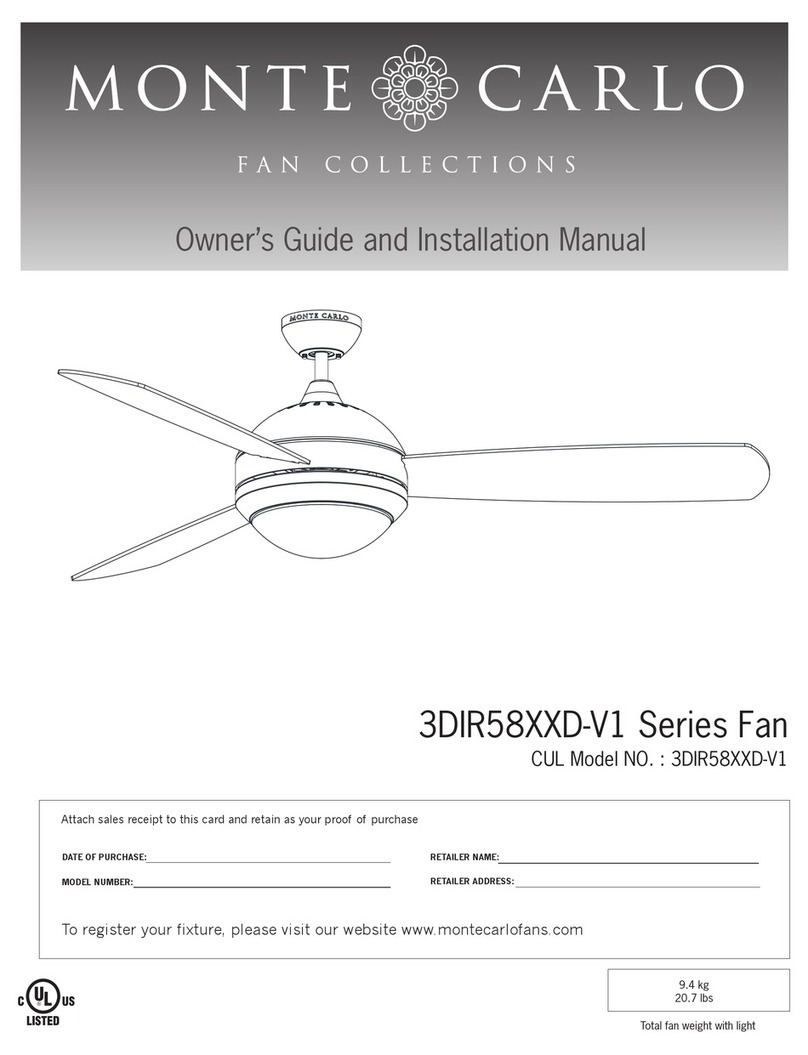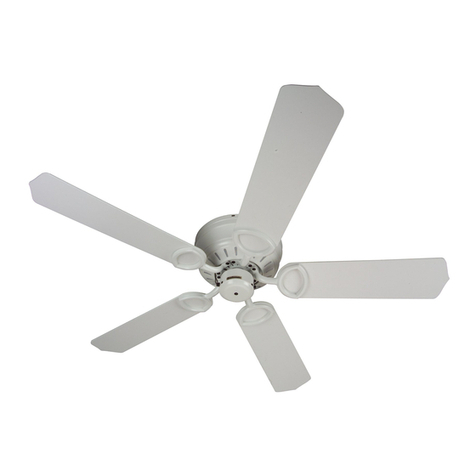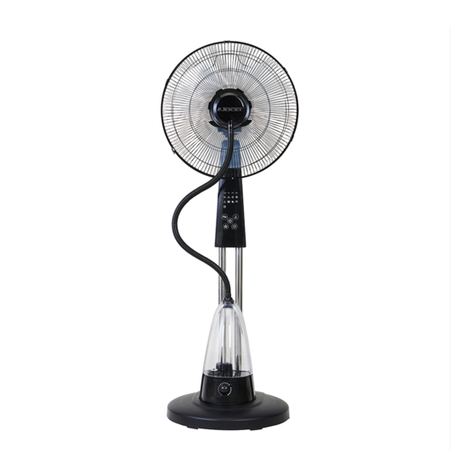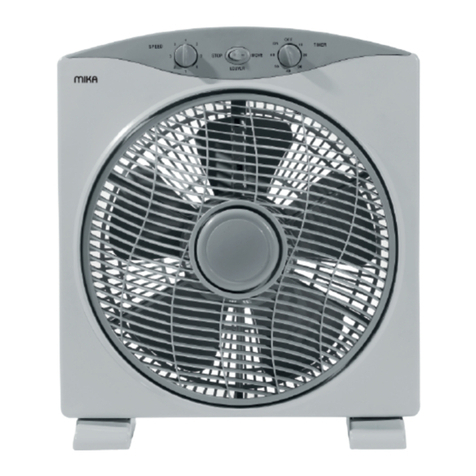
9
2.3 USING THE VALUE MAIN CONTROL
Location:Located in the busiest area of the house.
Purpose: To adjust air supply and reduce condensation on windows.
ADJUSTING AIR SUPPLYCONTROL
a) Press “PUSH” (A) until the “MIN.”, “MAX.” or “INTERMITTENT” light
indicator appears.
• When “MIN.” (minimum speed) is
selected, if the knob Bis set
above the click, the unit will
exchange in low speed with the
outside and if it is set below the
click, the unit will exchange on
high speed with the outside until
the desired humidity level has
been reached.
• When “MAX”. (maximum speed)
is selected, the unit will
exchange on high speed with
the outside either if he knob Bis
set below of above the click.
• Select “INTERMITTENT” (20 minutes minimum speed exchange every
hour) when you are away from the house for a few days or when you
deem the inside air too dry.
b) To turn the unit off , press “PUSH” (A) until the “MIN.”, “MAX.” and
“INTERMITENT” light indicators are all turned off.
NOTE: Optional controls will still be active. (Indicator (C) will be the only one to
light up if an optional control is active).
ADJUSTING CONDENSATION CONTROL
Setting during the summer months:
Normally there is no condensation on your windows during this period which
therefore eliminates the need of the condensation control for a few months. Set
knob Bat the “SUMMER’’ positon during this period.
Setting during the fall, winter and spring months:
Ideally, maintain humidity level within the “Comfort Zone” (between 5°C and
-20°C), which is the dark area around knob B.
To reduce humidity level, turn knob B clockwise a notch below the click. The unit
will then switch to high speed, lighting up the humidity light (Dindicator).When
this light goes "OFF" (after a few hours or a few days), repeat the same procedure
if excess humidity persists.
NOTE: If the air is too dry, set your knob B back to the “Comfort Zone” and use
INTERMITTENT or turn off the unit.
When the humidity light (Dindicator) goes "ON", you can still change the
mode of operation but your change will take place only when the light goes OFF.
-
-
NDEN
I
N
NTR
Y CONTRO
NDEN
I
N
NTR
MAXIM
M
PEE
AIR EX
HAN
E IN PR
RE
.
S
U
M
M
E
R
VC0028
A
B
C
D

